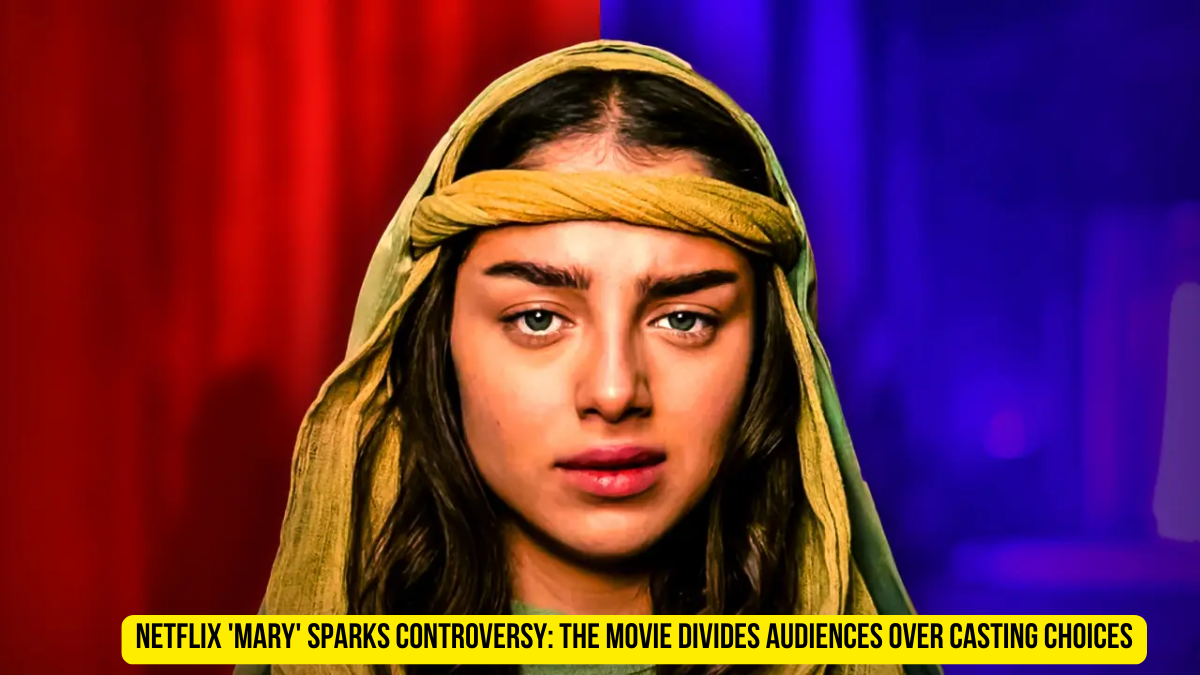Netflix recent release, Mary, directed by D.J. Caruso, has generated significant discussion across social media and news platforms. The film centers around Mary, the mother of Jesus, and follows her life’s journey through intense challenges, from societal rejection to fleeing King Herod’s threat. Despite the movie’s ambitious storytelling and emotional depth, it has come under fire for its casting choices, particularly the use of Israeli actors for key Christian roles. This decision has ignited debates about historical accuracy, cultural representation, and artistic liberty in modern cinema.
Plot Overview and Casting Choices
Mary is set against the backdrop of first-century Judea and presents a narrative that dives deep into the struggles faced by Mary. Noa Cohen stars in the titular role, bringing both tenderness and strength to her character. Ido Tako portrays Joseph, whose relationship with Mary adds another layer of complexity to the plot. The film also features supporting characters played by actors from Israel, raising questions about the portrayal of religious and cultural figures by individuals outside the communities they represent.
The decision to cast Israeli actors in these pivotal roles has sparked criticism among viewers and religious groups. While some argue that such casting could lead to a richer, more nuanced portrayal due to a shared regional background, others see it as a misstep, raising issues of cultural and religious representation.
The Controversy: Cultural Sensitivity and Representation
Critics have taken to social media and forums to voice their disapproval, expressing concerns that the casting choices might undermine the film’s authenticity. Many argue that while the actors are undoubtedly talented, the decision to cast them may seem politically insensitive in the context of ongoing Middle Eastern tensions. This perception has been further fueled by the use of Israeli actors in roles that are integral to Christian and Middle Eastern narratives.
On the other side, supporters of the casting have pointed out that acting transcends nationality and that talent should not be confined by borders. Director D.J. Caruso defended the decision, stating that the casting was intended to reflect the shared historical and cultural background of the story, adding realism to the project. He highlighted Cohen’s performance as crucial in depicting Mary’s emotional depth and resilience.
Audience Reactions and Social Media Backlash
Since its release, Mary has been at the center of intense discussion. Some viewers have called for boycotts, stating that they find the casting choices disrespectful to Christian history. The hashtag #BoycottMary trended for several days, as social media users expressed their frustrations over what they viewed as a failure to recognize historical and religious sensitivity.
However, others argue that Mary offers a fresh take on an age-old story, exploring themes of motherhood, faith, and sacrifice with modern storytelling techniques. These viewers have praised the film’s cinematography, emotional weight, and thought-provoking portrayal of Mary’s journey.
“I was moved by the depth of Noa Cohen’s performance,” one viewer commented. “The film captures the struggle and humanity of Mary in a way that makes you reflect on themes of faith and resilience, regardless of who plays the role.”
Addressing the Concerns: What Does the Future Hold?
The debate surrounding Mary sheds light on the delicate balance filmmakers must strike when adapting religious and culturally significant stories. Experts say that while artistic freedom is a core tenet of the film industry, there is a responsibility to be mindful of how casting choices might impact the audience and the communities represented on screen.
The issue has prompted discussions among industry professionals about the importance of cultural consultancy and the need to respect historical and religious contexts. Some production companies are considering establishing advisory boards that include cultural and religious experts to help guide creative decisions, ensuring that films are both respectful and authentic.
The Safeguards Against Misrepresentation
In response to feedback, some filmmakers and streaming platforms are implementing measures to help safeguard against cultural missteps. One such initiative is to include advisory panels that can guide casting and storytelling choices. This move aims to ensure that all aspects of a film, from the dialogue to the actors’ portrayals, align with the story’s cultural and religious significance.
As the conversation around Mary continues, viewers, critics, and industry insiders are left to ponder the implications of creative freedom in storytelling and the boundaries of representation. While artistic interpretation can bring new perspectives to familiar narratives, it’s crucial to be aware of how these interpretations are received by audiences with strong ties to the original story.
Mary is more than just a movie; it is a conversation piece that illustrates the evolving landscape of film and media. The backlash against the casting decisions is an opportunity for reflection on the balance between creative liberty and cultural sensitivity. The story of Mary has resonated with generations, and as it continues to be retold, it serves as a reminder of the importance of understanding and respecting the diverse perspectives that shape our world.
While Mary is not without its flaws, it is a testament to the complex nature of storytelling in a globalized world. As viewers, we must navigate these narratives with an open mind, recognizing that every adaptation comes with its unique challenges and opportunities. Whether or not Mary becomes a widely accepted classic remains to be seen, but it has undeniably sparked a crucial dialogue about representation and cultural respect in media.
Also Check: OpenAI Finally Releases AI Video Generator Sora to Public
